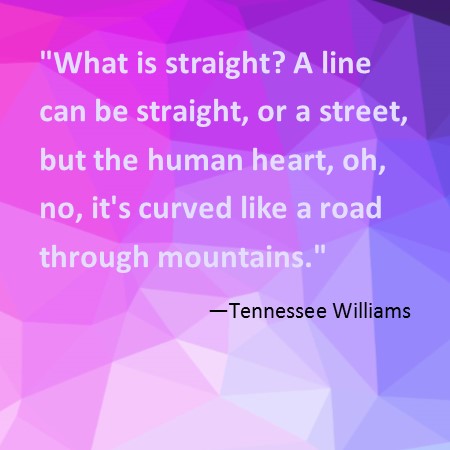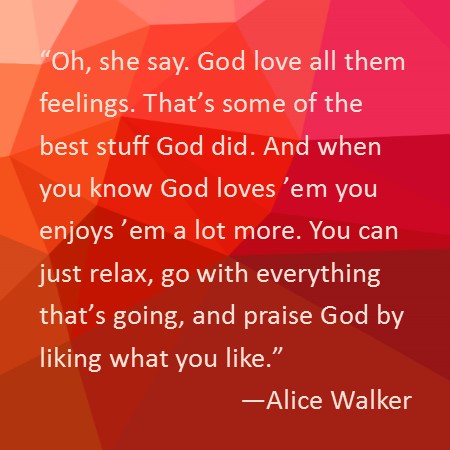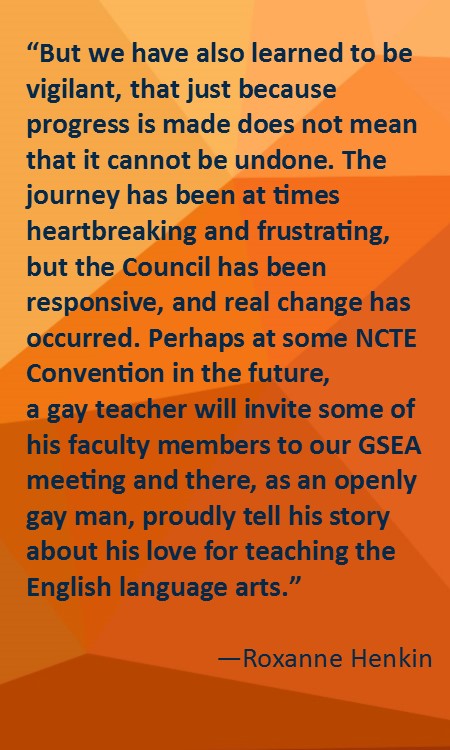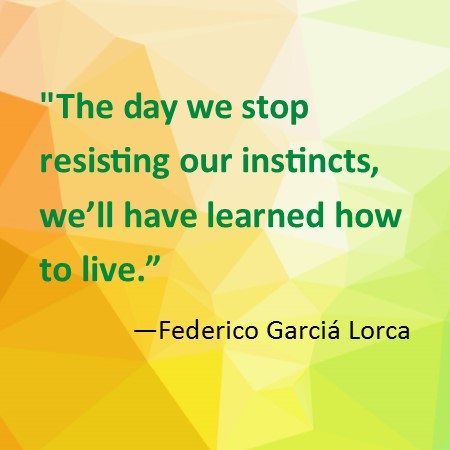The following post is by NCTE Vice President Jocelyn Chadwick and is part of a series she is writing about NCTE’s Legacy of Pride.
 NCTE’s legacy of identifying the need for—and continued efforts to achieve—not just presence but, more important, substantive inclusion through voice, participation, and collaboration for America’s students began early in its history. Between 1967 and 1968 and 1975 and 1976, the organization made documentable progress with African Americans and women and Latinos, but members knew they still had much work left to do. American Indians, poor whites of Appalachia, Asian Americans, gays and lesbians, the aged, the handicapped, and young teachers (Hook, 234, 236) were added to the agenda through a focus on and commitment to inclusion and collaboration. This focus not only included teachers but also embraced students.
NCTE’s legacy of identifying the need for—and continued efforts to achieve—not just presence but, more important, substantive inclusion through voice, participation, and collaboration for America’s students began early in its history. Between 1967 and 1968 and 1975 and 1976, the organization made documentable progress with African Americans and women and Latinos, but members knew they still had much work left to do. American Indians, poor whites of Appalachia, Asian Americans, gays and lesbians, the aged, the handicapped, and young teachers (Hook, 234, 236) were added to the agenda through a focus on and commitment to inclusion and collaboration. This focus not only included teachers but also embraced students.
This edition of Legacy of Pride celebrates LGBTQ Pride Month.
Tragically, this month has been a horrific one for our LGBTQ families, not only in Orlando, Florida, but also around the country. And we say and feel “our families” because we are all a part of the amazing and unique human tapestry. Families and friends and even strangers are grieving this massive loss of lives, lives violated, and irreparable memories of violence in Orlando. We grieve along with so many others; in addition to our grief, we are keenly concerned about our students around the country, who are also an integral part of our wonderfully diverse and multifaceted human community.
 In the late 1970s, NCTE began to chart a path forward by insisting that as an organization we had to have a more substantive focus and concentrated attention on inclusion. Subsequently, through publications and conventions, this focus narrowed, with topics such as “homosexuality in literature and in the classroom” (Hook, 236) being discussed and explored. And characteristic of NCTE’s proactive nature, a resolution was put forth and passed by the membership, affirming the pedagogical and philosophical stance “that a teacher’s rights should in no way be abridged because of his or her homosexuality” (Hook, 236). Our members have remained steadfast in this focus and commitment—not for us alone but especially for our students. We continue to insist on a panoply of texts—canonical and modern—that encourage and spark the difficult conversations, the curious conversations, the fascinating and surprising conversations among our students, students who eagerly engage with us because they feel safe and accepted for who they are and how they think.
In the late 1970s, NCTE began to chart a path forward by insisting that as an organization we had to have a more substantive focus and concentrated attention on inclusion. Subsequently, through publications and conventions, this focus narrowed, with topics such as “homosexuality in literature and in the classroom” (Hook, 236) being discussed and explored. And characteristic of NCTE’s proactive nature, a resolution was put forth and passed by the membership, affirming the pedagogical and philosophical stance “that a teacher’s rights should in no way be abridged because of his or her homosexuality” (Hook, 236). Our members have remained steadfast in this focus and commitment—not for us alone but especially for our students. We continue to insist on a panoply of texts—canonical and modern—that encourage and spark the difficult conversations, the curious conversations, the fascinating and surprising conversations among our students, students who eagerly engage with us because they feel safe and accepted for who they are and how they think.
I have had the pleasure of marveling at how bringing LGBTQ perspectives, issues, and ideas to texts resulted in engaging classrooms and pushing students and me to expand our thinking. Thanks to the real and substantive commitment and support of organizations like NCTE, the “traditional” ELA classroom has been transforming into a living-literacy laboratory. We have come to expect that this space be reflective of our diverse human tapestry. We have come to expect that classrooms become places where all student voices are encouraged and welcomed, places where our LGBTQ students know they are safe and supported—instructionally and emotionally.
 I have had the privilege of witnessing such safe and supportive classrooms around the country with dynamic ELA teachers such as Kimberly Parker, Kristin Comment, Matthew Kim, Daniel Bruno, Winona Siegmund, Jason Torres Rangel, Janis Mottern-High, Courtney Morgan, and so many others. Our one, founding identification—we are ELA teachers—is enhanced by our unique diversities. We are one.
I have had the privilege of witnessing such safe and supportive classrooms around the country with dynamic ELA teachers such as Kimberly Parker, Kristin Comment, Matthew Kim, Daniel Bruno, Winona Siegmund, Jason Torres Rangel, Janis Mottern-High, Courtney Morgan, and so many others. Our one, founding identification—we are ELA teachers—is enhanced by our unique diversities. We are one.
Not everyone can travel to these classrooms for inspiration, but NCTE holds another treasure trove of informative and instructional conversations in the articles our members write and share about LGBTQ issues, pedagogy, research, and instruction. These brave and innovative works further expand and affect how we all reread, rethink, and reenvision the literature we teach, as does the realization that our students were never, ever one-size fits all. Articles by Jill Hermann-Wilmarth and Caitlin L. Ryan, John Pruitt, Amanda Haertling Thein, R. Joseph Rodriguez, Caroline T. Clark and Mollie V. Blackburn, Becca Chase and Paula Ressler, David L. Wallace, and many, many others reveal how committed we all are as ELA teachers to substantive inclusion, presence, and privilege for ourselves and our students.
While the tragedy of Orlando clearly reminds everyone we still have a long path yet to travel, for us as educators, especially as ELA teachers, NCTE will continue its forward-thinking leadership and action in creating safe spaces for students and our educators to engage, collaborate, explore, express, and learn about themselves and others. This is so critical to meeting the realities and needs of society as a whole for the twenty-first century and beyond.
NCTE’s own uniqueness, relevance, and strength lie with its commitment to diversity and to the understanding that the word diversity is more than a term or a label. Our members reify this understanding every day: we live it; we model it; we teach it.
Work Cited
Hook, J. N. A Long Way Together: A Personal View of NCTE’s First Sixty-Seven Years (Urbana, IL: NCTE, 1979).

